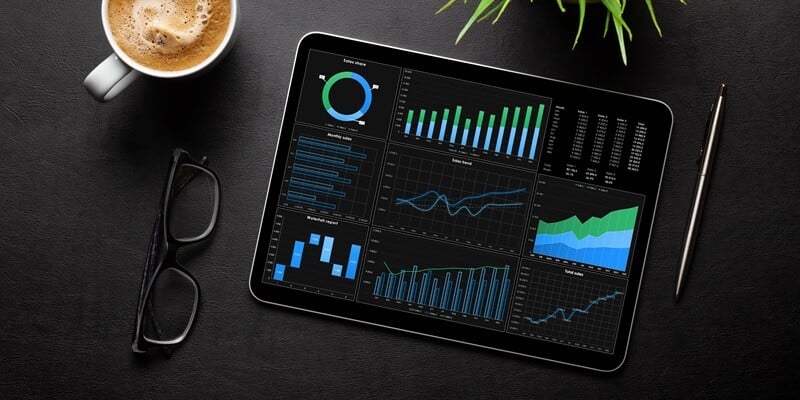Thanks to technological advances over the last ten years, marketing has undergone a considerable transformation.
The impact of technology on the marketing industry has been profound and the way businesses interact with customers has completely changed as a result of this digital growth. New tools and platforms now offer unparalleled opportunities for data-driven campaigns, targeted engagement, and customer-centric experiences.
In this episode of The Undiscovered Metric, we speak with someone who has witnessed this evolution first-hand. For over 15 years, David Bushell has been the Director at AdGrow, a marketing agency that specializes in pay-per-click advertising.
Keep reading for the highlights and insights, or watch the video below!
With 72% of TMT CEOs currently believing that technological change will “drive changes in the way their companies create, deliver or capture value in the next three years,” it’s clear that this trend is only going to continue.
As founder of AdGrow, David's tech savvy has been and clearly will be advantageous, helping him navigate the ever-evolving marketing landscape.
“Marketing has obviously become hugely data-driven in the last decade. I think it's a very, very different skill to what it was even just 10 years ago, but I've always been a data guy. Google ads and PPC (pay-per-click) in general is now a great hybrid of data with a bit of creativity too. It's not pure spreadsheets.”
The rise of Google Ads and its impact
In the early 2000s, Google Ads was born, and it transformed digital marketing. Previously, marketers heavily depended on conventional platforms like television, radio, print, and outdoor media. Google Ads offered precise ad placements, instant analytics, and enhanced presence on search engines. Then came the competition.
“You’d typically see Meta and LinkedIn Ads for more B2B-focused marketing. SEO was always there, always has been, and always will be, as a key channel. The dawn of cost-per-click advertising is probably the biggest change in marketing. It's a completely different kind of universe to what went before.”
Cost-per-click advertising transformed marketing by providing accurate targeting, real-time performance tracking, and cost-effective reach. It moved the emphasis from conventional broad audience techniques to data-driven, measurable, and effective digital campaigns.
Prioritizing budget utilization for maximum impact
A lot has changed, so what are the primary metrics that marketers are currently prioritizing to gauge the success and influence of their campaigns in today's fiercely competitive industry?
“One of the key metrics for most people is CPA (cost-per-acquisition),” says David, “CPA can be defined by the cost-per-click and the conversion rate, those are the two things that create CPA. Those are your levers ultimately as an advertiser.”
“But, if I were going to say there's one really undiscovered metric, it is probably budget utilization. You want to be making sure that your budget is burning in a responsible way, as fast as it can without sacrificing quality. What's your current weekly budget, and what's your actual spend over the last seven days as a percentage of that weekly budget? That's what budget utilization is.” A 100% budget utilization hints at bids and CPA targets being set higher than they need to be, so marketers can find a quick win simply by lowering them slightly and then waiting a week or two.

It’s obviously key for marketers to get the most out of their budget. By effectively using their resources across different channels and campaigns, they can safeguard optimal allocation. Keeping track of spending, and its continual analysis, allows them to identify what strategies are working, get rid of the ones that aren't, and ultimately maximize their return on investment.
Quick case study: When can decreasing revenue help the bottom line?
Here at The Undiscovered Metric, we always like real-world examples from our interviewees that demonstrate a good success story. So, we asked David if he had suitable tales of any recent wins.
“We have a retail client, they sell a mixture of women's clothing — some of it quite formal, some of it more casual. We could see that a lot of the sales came from products with really high return rates. However, we ended up in this slightly unique scenario where we've gone in, and we'd actually lowered that client’s revenue but increased their bottom line because what they'd done prior to that was pretty textbook Google Ads. They just followed the revenue. But the revenue was on products that had a higher return rate.”

“So we ended up really setting much higher ROAS (return on ad spend) targets for those high returning brands and categories, which made sense, they were calculated. Of course, the higher ROAS target meant that the volume pulled back a bit, but that was fine. Now, because it's high ROAS, the return rate's not such a problem. And then we went more aggressively, we lowered ROAS, spent more, and bid higher on products that were lower margins but ultimately had a much lower return rate. So their real margin was actually much better, but it was hidden by return rate.”
“What you want is a true picture of margin. You want consistent data, you don't want things that are going on and off all the time or in and out of stock because bid algorithms don't like that too much. That was really eye-opening to go to a client and lower their revenue but end up with a really happy client.”
Keeping ahead of the curve
Evolving and staying innovative is critical for marketers who want to remain relevant in an ever-changing marketplace. Adapting to new trends and channels allows marketers to effectively reach and engage with their target audience, remain competitive, and embrace growth possibilities. While keeping up with the latest technologies and understanding how they are rapidly changing the industry, what other tools do marketers have at their disposal to gain an advantage? We asked David to share his recommendations for staying in the know and at the front line.
“As a hands-on guy, I always want to be up to date with scripts just because there are tons of nice shortcuts and cool things there. It's a bit of a toy box, but also aligns with how bleeding edge the real thought leaders are because the first outcome is you get a great script.”
“I always want to know, even if I wasn't the person doing the hands-on optimization, even if I was on the client side and the Marketing Manager or Marketing Director, I’d still want to know what's out there. How are those guys thinking? That would at least allow me to ask the right questions and look at what can be automated, what can be scaled.”
Making a connection
Throughout the last decade, the marketing industry has evolved with a focus on the cost-per-acquisition metric to measure the effectiveness of campaigns. However, budget utilization is also crucial for efficiently optimizing resources, and marketing scripts are playing an ever-more important role in targeting customers with the right messaging across various channels.
Having been there and done that, David has had a ringside seat for all of the recent tech advancements and yet appreciates that it still takes a human, or a company of them, to get to the core of understanding the market.
“Certainly, the big continuous change that I've seen is that my job has gone from being that guy who opens up the bonnet and starts fiddling around and says, ‘look at what I’ve done,’ to something a lot more automated. There's a lot less scope for differentiation and some of the campaign types have a lot more automation. But what is still there is taking the insights from the account and connecting data sources to really join the dots.”

“If you can connect your data well, and it just so happens that Adverity is very good at doing that, you'll get more findings, and you'll get a more competitive advantage. Whether it's return rate, whether it's understanding SQLs (Sales Qualified Leads), whether it’s understanding lifetime value — the real money is really after the conversion and that's what needs to be measured.”
Technology has been instrumental in enabling marketers to achieve success by providing advanced tools and platforms that have empowered businesses to reach customers in novel and imaginative ways. However, basic campaign optimization is no longer enough — joining data sources together to more tightly link platform-level operational metrics to core business goals is how the winners are winning. The rapid pace of tech development and its proliferation has opened up new opportunities and benefits, and with continued innovation, marketers can expect further improvements and capabilities for a very bright future.











